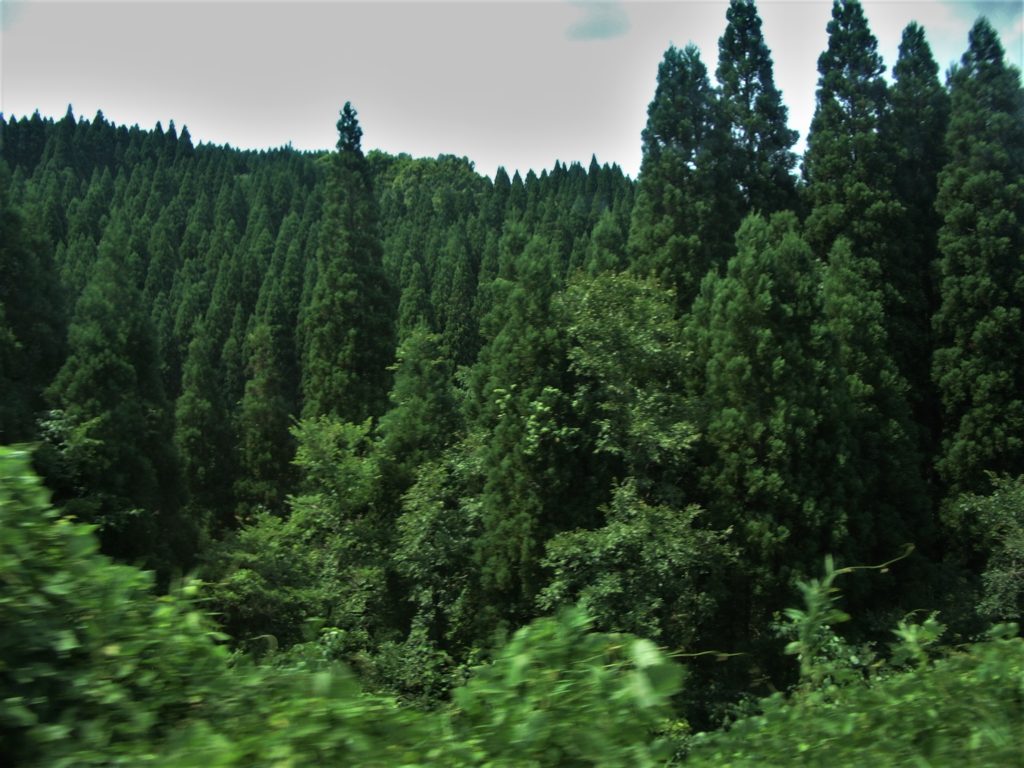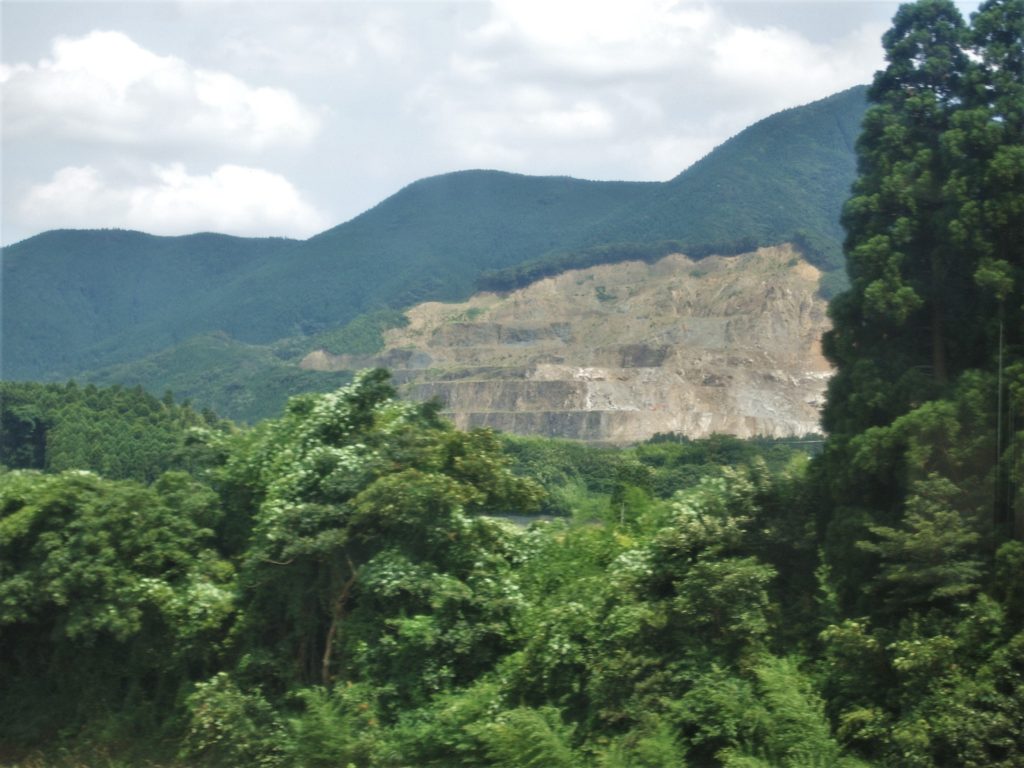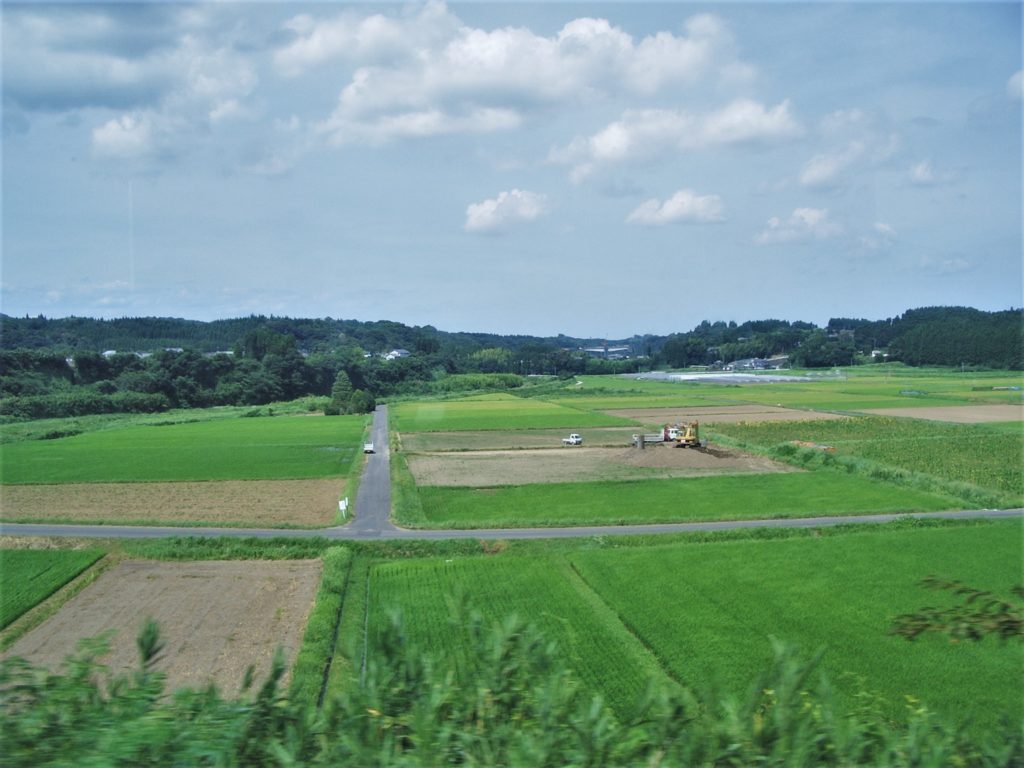Greenery.
A very short post.
I think a lot of people think of Japan and picture huge cities, buildings as far as the eye can see, full of concrete and neon lights, masses of people, rushing.
Which is not inaccurate for say, the constant activity of central Shinjuku, or the vastness of metropolitan Tokyo.
However, even in the residential neighbourhoods of Tokyo it is a different story, let alone in prefectural capitals or regional cities or towns.
The first place I lived in and considered home in Japan was Miyakonojo city.
The population these days is somewhere around 160,000, however this feels a little bit inflated due to some surrounding towns having been merged into the city, which is happening throughout rural Japan due to rural depopulation as people move to the large cities, and the increasingly elderly population dies.
If there was an overall impression I got it would have been greenery and mountains.

What may be surprising to many is that a lot of the forest in Japan is not old growth, and has been managed for centuries.
Jared Diamond has a great section on this in his book Collapse which describes the success of forest management in Tokugawa-era Japan (1603-1868) in order to contrast this against societies which have collapsed due (wholly, or in part) to poor or non-existent management of their natural resources which led to environmental damage.
Another fantastic resource I have come across is a well researched and beautifully filmed video by Greg Lam, who lives in Tokyo and has a Youtube channel Life Where I’m From.
On the faces of the mountains which surrounded Miyakonojo, I did notice areas which had been cleared of trees, and there were also noticeable areas of either different tree variety or growth.

The area I lived in was known for its large numbers of chickens, and pigs, which suffered huge losses in avian and swine influenza when these viruses hit. Agriculture also included greater burdock and bell pepper.
Miyakonojo is the largest producer in Japan, having the last four Japanese workshops, of bokuto, which are wooden swords (aka katana) used for training.
Miyakonojo also produces 90% of bamboo archery bows (known as daikyu) in Japan.
In other words, it is a rural area, with lots of forest, both wood and bamboo, and greenery.
